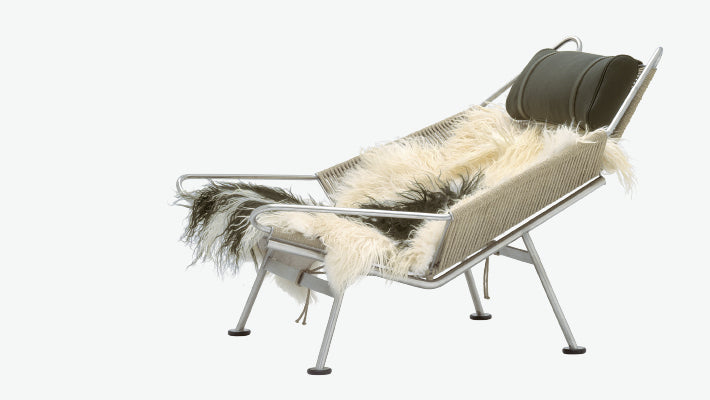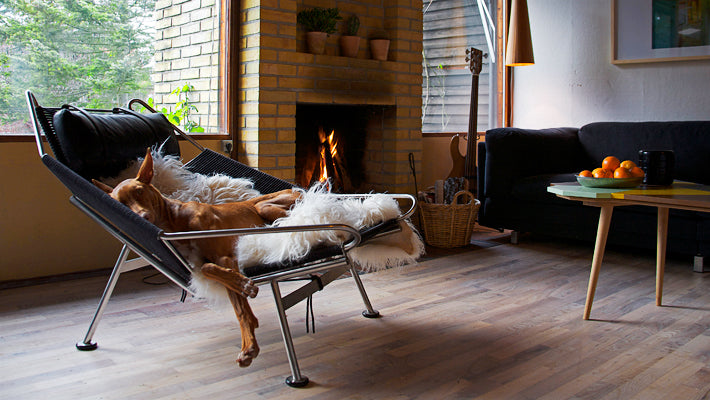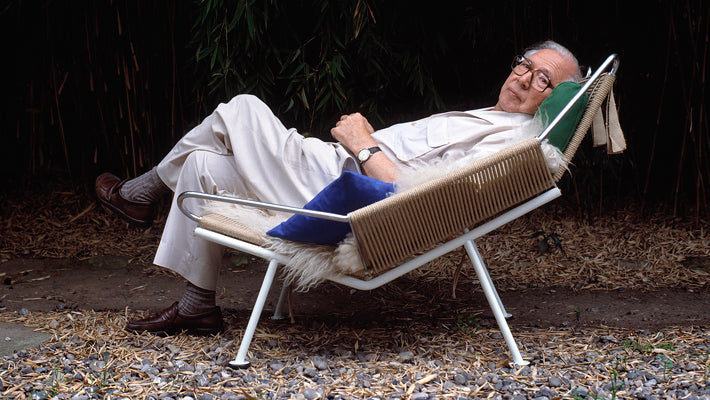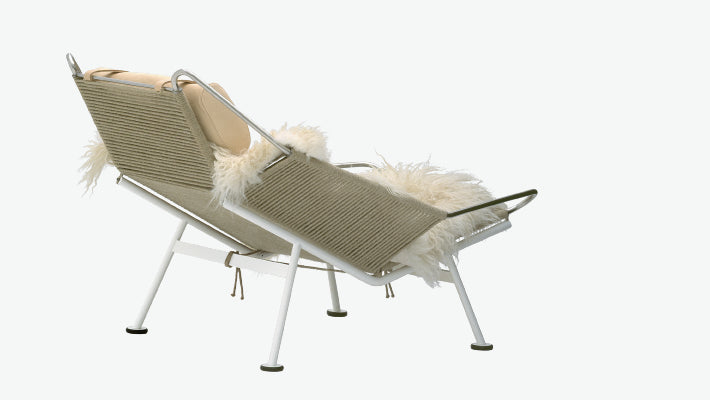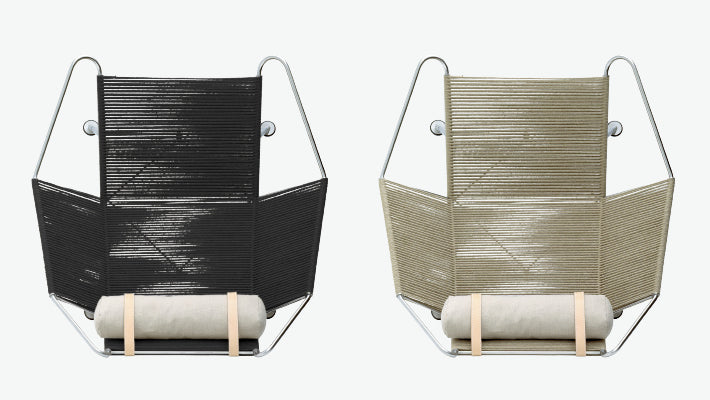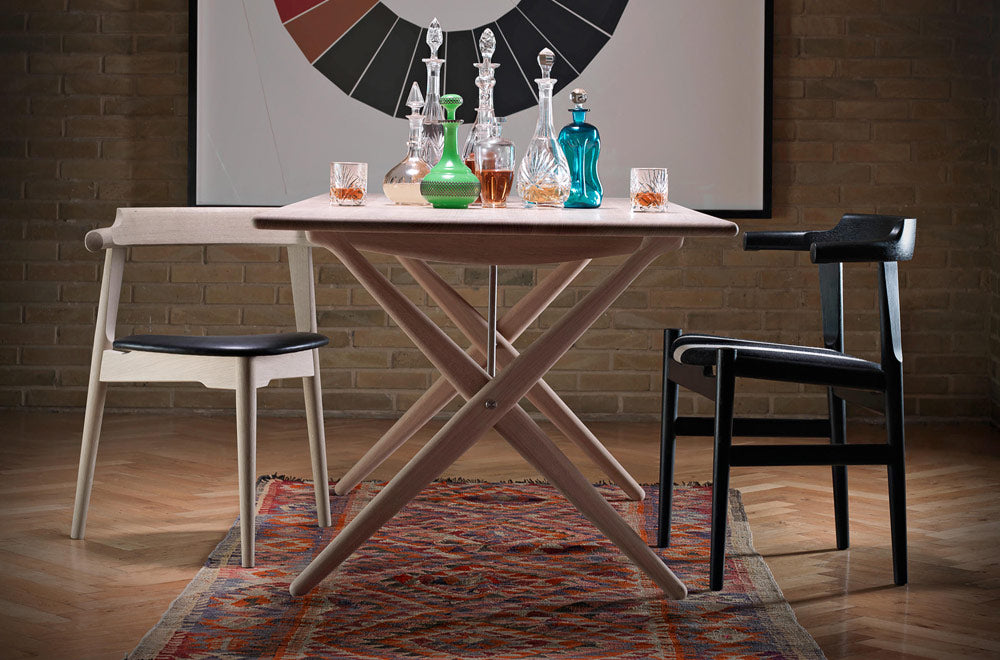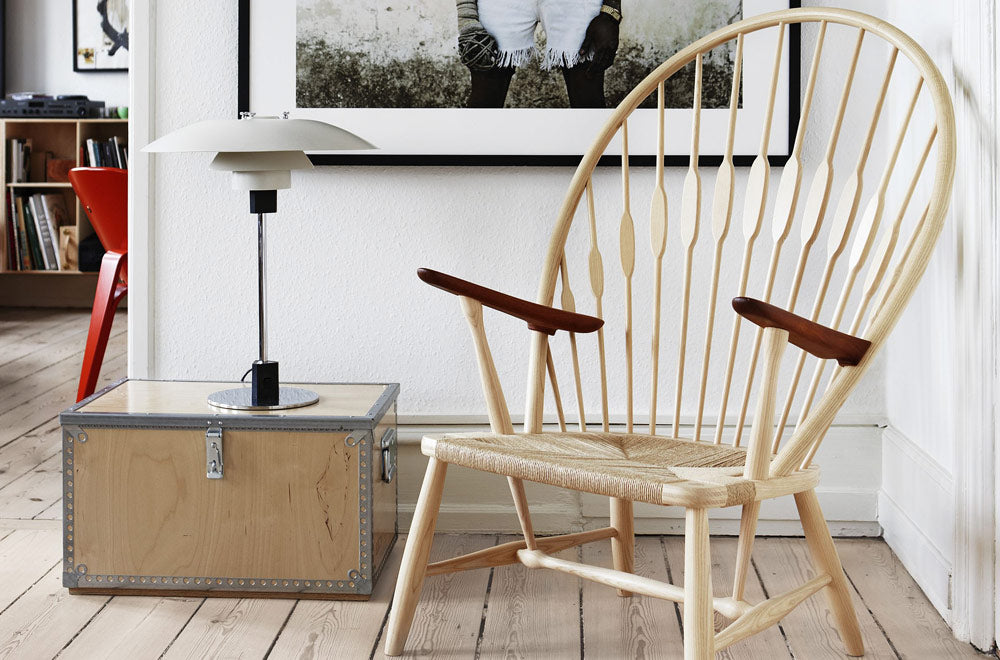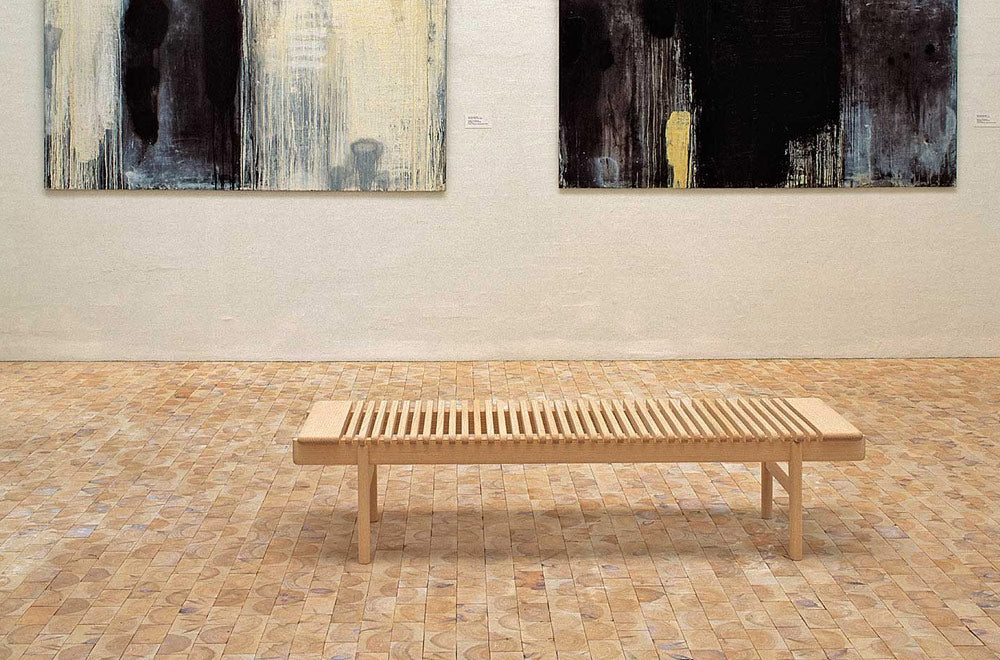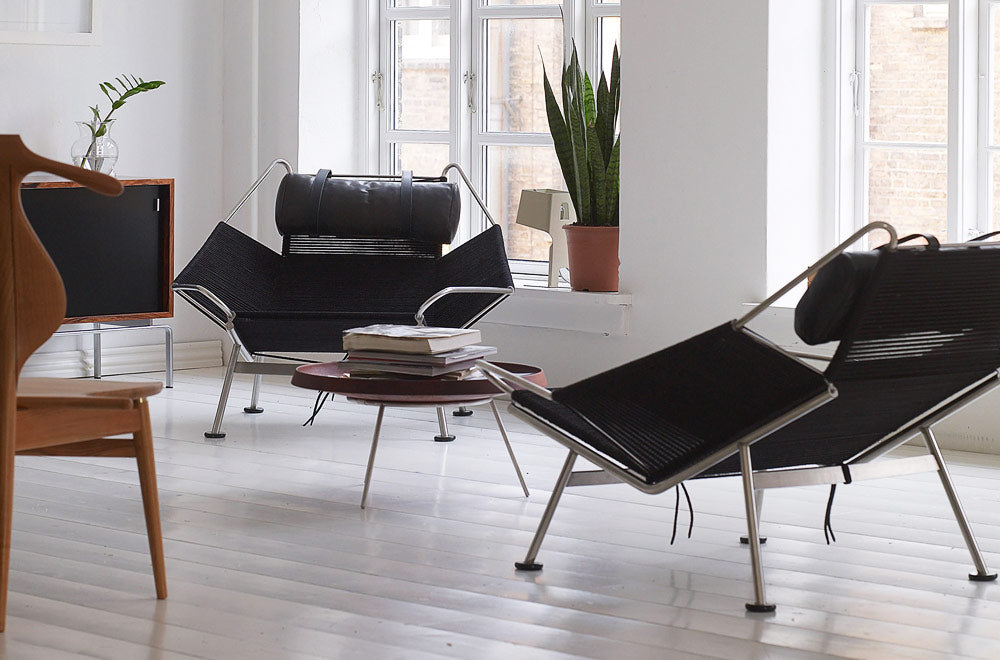With a frame made of solid stainless steel, 240 metres specially developed flag line forming the seat and back, and a longhaired sheepskin softening the industrial sharpness of the steel, this chair constitutes ultimate and luxurious relaxation!
Although the appearance of the Flag Halyard Chair seems rather futuristic, the basic idea was conceived on a hot summer afternoon in rather trivial circumstances. While the kids were playing in the shallow waters along the beach, Wegner was digging himself into the sand building a comfortable chair to enjoy the holidays. Back in the summerhouse Wegner made the first sketches using the seating angles that he had conceived on the beach.
Despite having obvious preferences for wood, Wegner shows his bold and courageous appetite for creating. With the Flag Halyard Chair he pays a tribute to the early modernists such as Le Corbusier, Mies van der Rohe, and Marcel Breuer, and proves that he masters stainless steel with the same conclusive elegance as he masters wood.
pp225 comes with a unique sheepskin for further comfort. All sheepskin are produced in Iceland, and are a bi-product of food production. All sheep has lived in the open fields, and the hides has been processed without the use of chrome.
If you wish to select the sheep-skin for your Flag Halyard Chair, you can see all available sheepskin following the below link. When you place the order at your dealer, simply tell them to pass the number of your selection to the PP office, and we will have that particular sheepskin shipped with your chair.
104W x 115D x 80H cm
38cm seat height
pp225 is available in natural or black flag line. Flag line is made from jute and has a high tensile nylon core for optimal strength covered by a protective sleeve of woven jute. In order to optimize rigidity the flag line is stretched before it is applied to the chair.
pp225 comes with a leather or fabric upholstered neck cushion held by brittle leather or jute straps.
pp225 comes with a unique sheepskin for further comfort. All sheepskin are produced in Iceland, and are a bi-product of food production. All sheep lived in the open fields and their hides has been processed without the use of chrome
Solid stainless steel frame
Straps for the neck cushion: Bridle leather (vegetal, black, dark brown or walnut) or jute
Son of a shoe-maker in southern Jutland, Hans Wegner, finished his formal training as a cabinetmaker with master cabinetmaker Stahlberg in 1930 before starting at Teknologisk Institut in Copenhagen. He soon moved to the School of Arts and Crafts in the Danish capital where he became architect in 1938, and started teaching in 1946.
In 1940 he joined Arne Jacobsen and Erik Møller in Arhus, to design the furniture for the new Arhus city hall. He started to work with 'minister' cabinetmaker Johannes Hansen in 1940 and showed his first furniture in the famous Hansen store on Bredgade 65 in 1941. Johannes Hansen was more than twice as old as the 26 year old Wegner but the unique collaboration between the two became the undisputed backbone of Danish furniture design and the main reason for it's world wide recognition in the fifties and sixties. The Copenhagen Museum of Art and Industry acquired the first Wegner chair in 1942.
In 1943 he started his own design office and 1 year later designed the first of a long series of 'chinese' chairs inspired by portraits of Danish merchants sitting in Ming chairs for Fritz Hansen. In 1950 Wegner designed the “Wishbone Chair” produced by Carl Hansen & Søn in Odense which became the most successful of all Wegner chairs. Most well known for it’s use by Kennedy and Nixon in their famous CBS TV debate of 1960.









